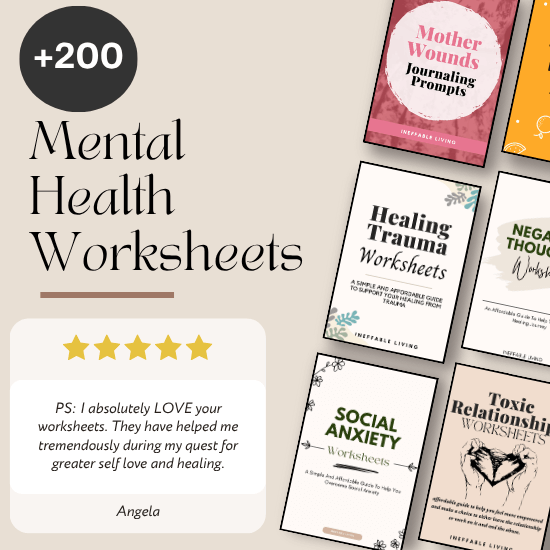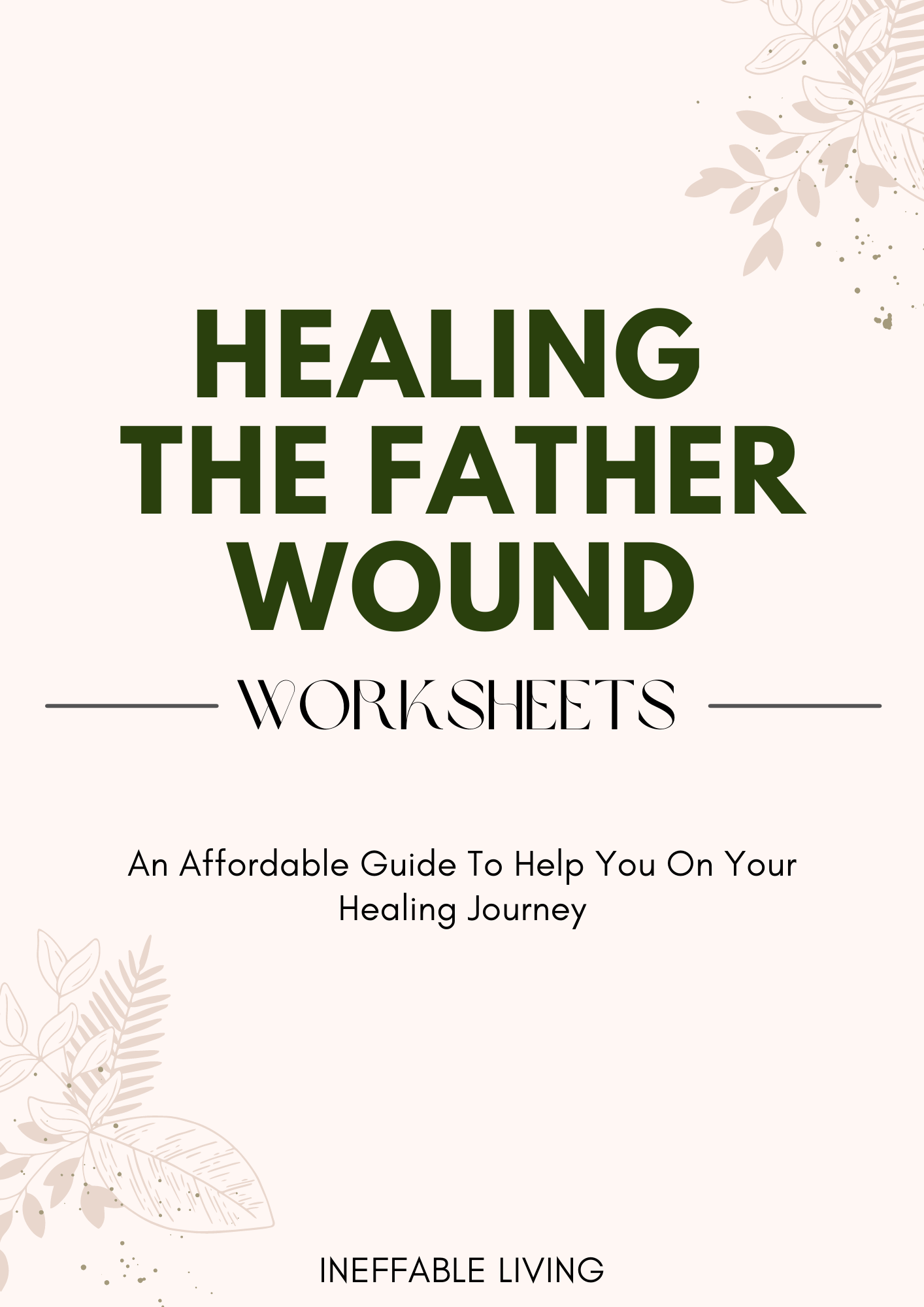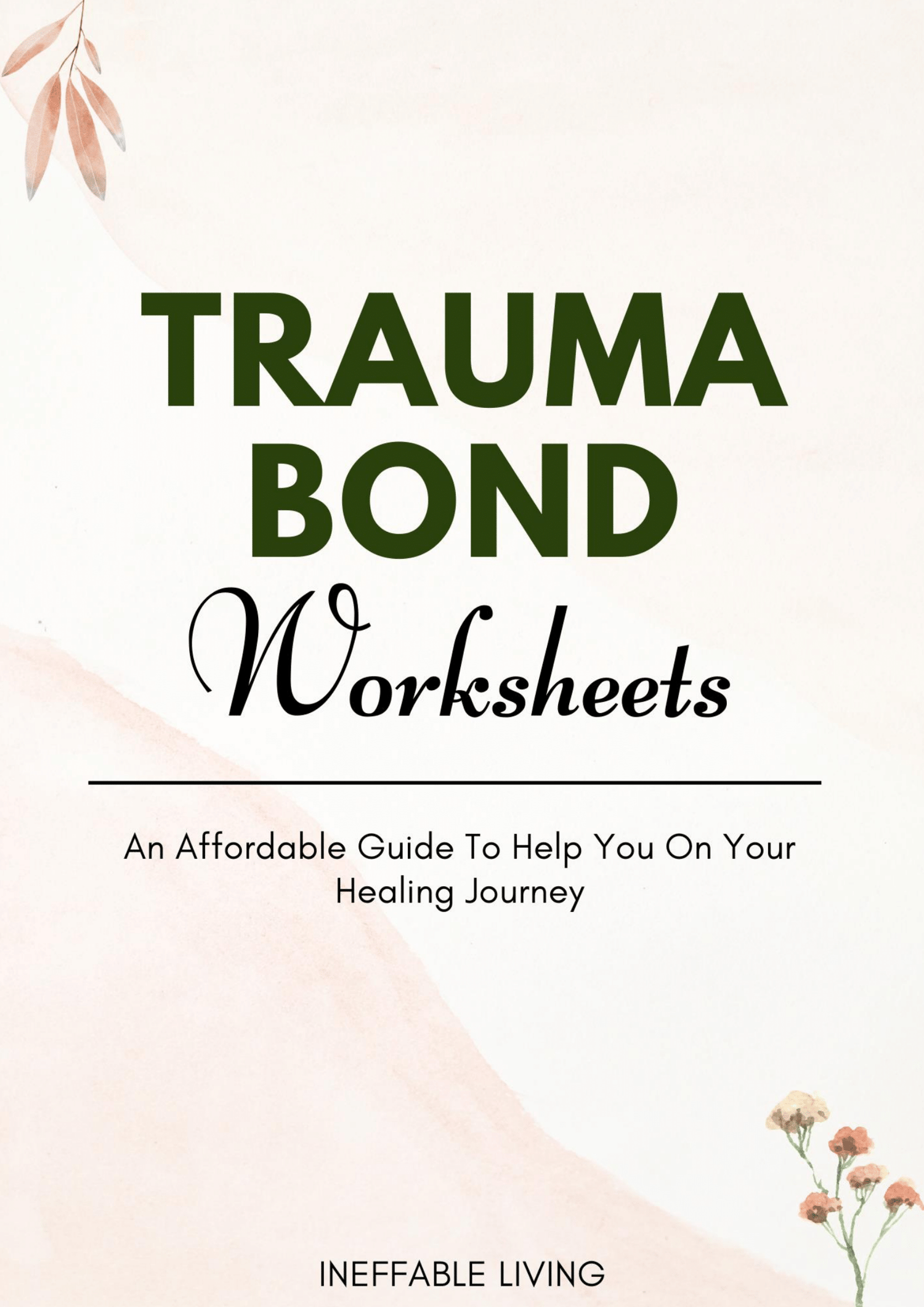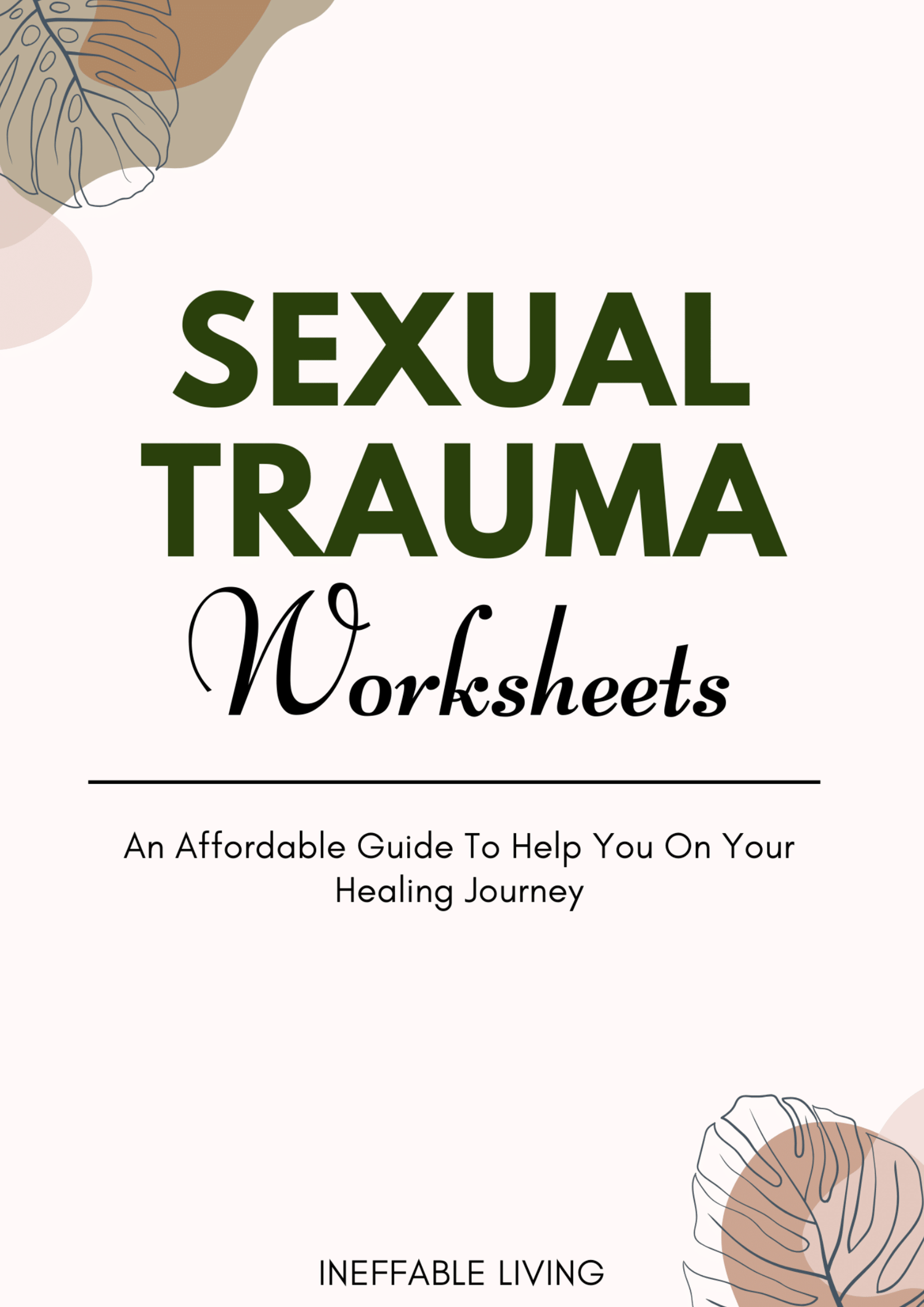Trauma doesn’t always scream. Sometimes, it hides in everyday life — in overreactions, emotional shutdowns, anxiety that won’t go away, or the constant fear that something bad is just around the corner. If you’re carrying wounds from the past that still shape how you think, feel, and relate to others, you’re not broken — you’re surviving.
These trauma healing worksheets are here to help you move from survival to recovery, step by step.
- What Trauma Can Look Like
- 1. Healing Trauma Worksheets
- 2. Mother Wound Journaling Prompts
- 3. Healing The Father Wound Worksheets
- 4. Trauma Bond Worksheets
- 5. ACEs Worksheets (Adverse Childhood Experiences)
- 6. Childhood Emotional Neglect Worksheets
- 7. Sexual Trauma Worksheets
- Why Worksheets Can Help You Heal
- Healing Is Not Linear — But It Is Possible
What Trauma Can Look Like
Trauma isn’t always one big event — it can be a slow drip of emotional pain over time. Signs you’re carrying unhealed trauma may include:
- Constant hypervigilance or startle response
- Trouble trusting people or setting boundaries
- Emotional numbness, dissociation, or shutdown
- Flashbacks or intrusive thoughts
- People-pleasing or over-functioning to feel safe
- Self-blame, shame, or feeling “too much” or “not enough”
- Repeating unhealthy patterns or relationships
You don’t have to have all the answers to begin healing — you just need a place to start.
1. Healing Trauma Worksheets
Work through the layers of trauma at your own pace with grounding tools, trigger mapping, emotional regulation practices, and guided healing prompts.
2. Mother Wound Journaling Prompts
Gently explore the unmet needs, emotional pain, and lingering patterns tied to a strained or absent maternal relationship — and begin releasing them.
3. Healing The Father Wound Worksheets
Process the impact of a distant, critical, or unavailable father figure and learn how to reclaim your voice, worth, and boundaries.
4. Trauma Bond Worksheets
Untangle the emotional grip of toxic relationships with reflection tools that help you recognize manipulation, break the cycle, and rebuild safety.
5. ACEs Worksheets (Adverse Childhood Experiences)
Make sense of how early trauma shaped your nervous system, behaviors, and beliefs — with structured tools for awareness and recovery.
6. Childhood Emotional Neglect Worksheets
Heal from feeling unseen or emotionally unsupported with compassionate prompts that help you meet the needs you were once denied.
7. Sexual Trauma Worksheets
Support your healing from sexual harm with shame-free, trauma-informed pages focused on restoring agency, safety, and self-worth.
Why Worksheets Can Help You Heal
Trauma healing takes time, and it often feels overwhelming. These worksheets provide a gentle, non-judgmental space to:
- Name your triggers and survival patterns
- Track and regulate your nervous system responses
- Challenge shame and self-blame with truth
- Explore your inner child and unmet emotional needs
- Start rewriting the story you’ve been telling yourself
- Build safety, self-trust, and emotional resilience
They don’t rush your healing — they walk with you through it.
Healing Is Not Linear — But It Is Possible
Trauma recovery is messy, painful, and full of progress that’s easy to overlook. These worksheets help you track the small shifts, celebrate the quiet victories, and keep going when it’s hard. Because your past may shape you — but it doesn’t have to define you.

Read Testimonials –> HERE
FAQs
Can I use the worksheets with my therapy clients?
Absolutely! The worksheets are meant for both, personal and professional use.
The worksheets are copyrighted so you can’t resell them or upload them publicly online. But you can share them with your clients.
Can I make changes to the files before handing them down to my clients?
Absolutely! You can convert your PDF files to word documents and make changes using free tools like pdf2doc.com.
How do I know if these worksheets are right for me?
These worksheets are perfect for anyone who needs an affordable, yet effective strategies to help them increase their self-awareness and work on their own issues – alone or with their therapist.
These worksheets are not a one-size-fits-all approach and are in no way meant to imply that change is as one-dimensional as a worksheet.
So choose the techniques and suggestions that apply to you and tailor the exercises in ways that will be helpful to you.
Can I use these worksheets on my own or should I seek professional guidance?
These worksheets are designed to be helpful on their own. However, seeking professional guidance from a mental health professional can increase their effectiveness.
How do I use mental health worksheets effectively?
1. Set aside dedicated time: Find a quiet and comfortable space where you can focus on yourself without distractions. Treat this as valuable self-care time, just like you would for any other important appointment.
2. Choose the right worksheet: There are numerous worksheets available, each offering unique exercises and prompts. Consider your specific needs and goals. Are you looking to enhance self-awareness, manage stress, or improve your relationships? Select a worksheet that aligns with your current focus.
3. Read instructions carefully: Take a moment to fully understand the purpose and instructions of the worksheet. Clarify any questions you may have before proceeding.
4. Engage in self-reflection: Set pen to paper and let your thoughts flow. Don’t worry about perfection or judgment – this is your private space to express yourself authentically. Be honest with yourself and explore your emotions, thoughts, and experiences without restraint.
5. Reflect on your insights: After completing the worksheet, take some time to reflect on what you have learned about yourself. Consider any patterns or triggers that impact your mental well-being. Identify areas where you can implement positive changes or coping strategies.
6. Incorporate your insights into daily life: The true value of mental health worksheets lies in applying your newfound awareness and insights to your everyday life. Consider how you can integrate these insights into your relationships, self-care routines, and overall well-being.
When should I see a therapist?
These worksheets are designed to help you better understand yourself, your distress, and your difficulties.
You can use it in conjunction with therapy or as a stand-alone guide to manage your distress.
These worksheets can be considered a low-intensity intervention. They’re perfect for those who are struggling with mild to moderate issues.
In mental health, mild to moderate symptoms are those that are severe enough to be distressing to you, but moderate enough that you can still manage most of your daily activities.
If you feel very overwhelmed by any of the exercises in these worksheets, this might be a sign that your symptoms are too severe for you to do the work by yourself.
A therapist will help you at your own pace and provide support and encouragement throughout the process.
Do you have more questions? Check this page –> FAQs






